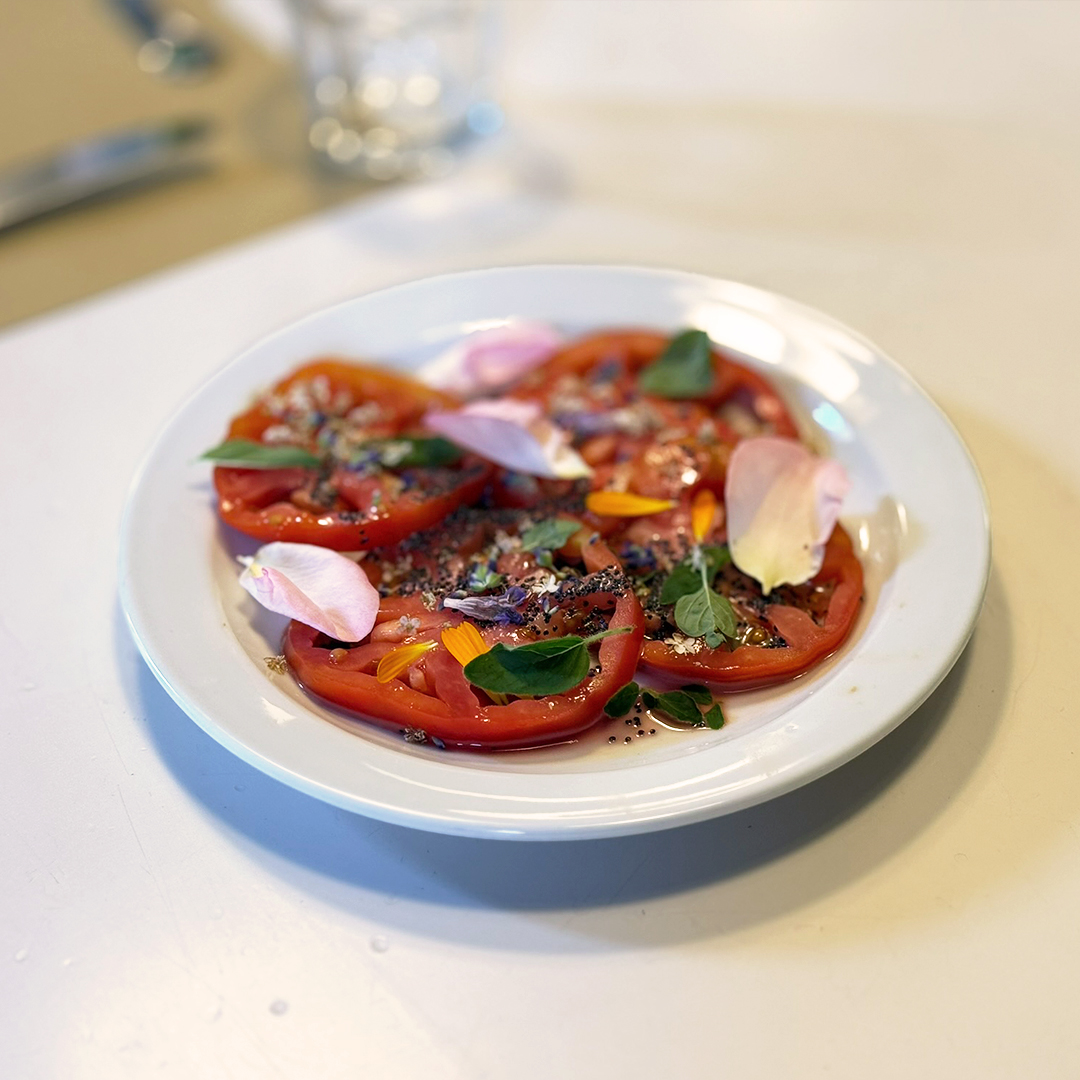


Make the poppy vinegar
Use only poppy petals harvested from clean, untreated areas, far from roads or cultivated fields. Remove the stems and keep just the petals. Rinse gently under cold running water and pat dry with kitchen paper.
Place the petals in a clean glass jar and pour in the vinegar until fully covered. Seal the jar and let it sit in a cool, dark place for about 10 days, shaking gently from time to time to help the infusion.
After 10 days, strain the vinegar through a fine sieve or cheesecloth and transfer it to a clean bottle.
Assemble the dish
Wash the tomatoes and slice them thinly. Arrange the slices on a serving plate and season with extra-virgin olive oil, salt and black pepper. Add a spoonful of poppy vinegar and finish with a sprinkle of poppy seeds and a few edible wild flowers.
Prepare the mascarpone cream
Separate the egg yolks from the whites. Whisk the yolks with the sugar (and vanilla, if using) until pale and frothy. Gently fold in the mascarpone a little at a time using a spatula or whisk, being careful not to deflate the mixture.
In a separate bowl, whip the egg whites with a pinch of salt until stiff. Fold them into the mascarpone mixture, stirring gently from the bottom up. Chill for at least 30 minutes before serving.
Sauté the peas
In a small pan, melt a knob of butter and add the peas with a light sprinkle of sugar. Sauté for a few minutes, just enough to keep them crisp.
Dress the strawberries
Cut the strawberries into pieces and toss with sugar and lemon juice. Let them sit briefly to release their juices.
To assemble
Spoon the strawberries onto the plate. Add a quenelle of mascarpone cream, a spoonful of sautéed peas, and finish with a few dark chocolate chips.

Every copy helps serve meals to those in need.
Have a zero-waste recipe of your own?
Submit it through the form below and help us grow this shared table.